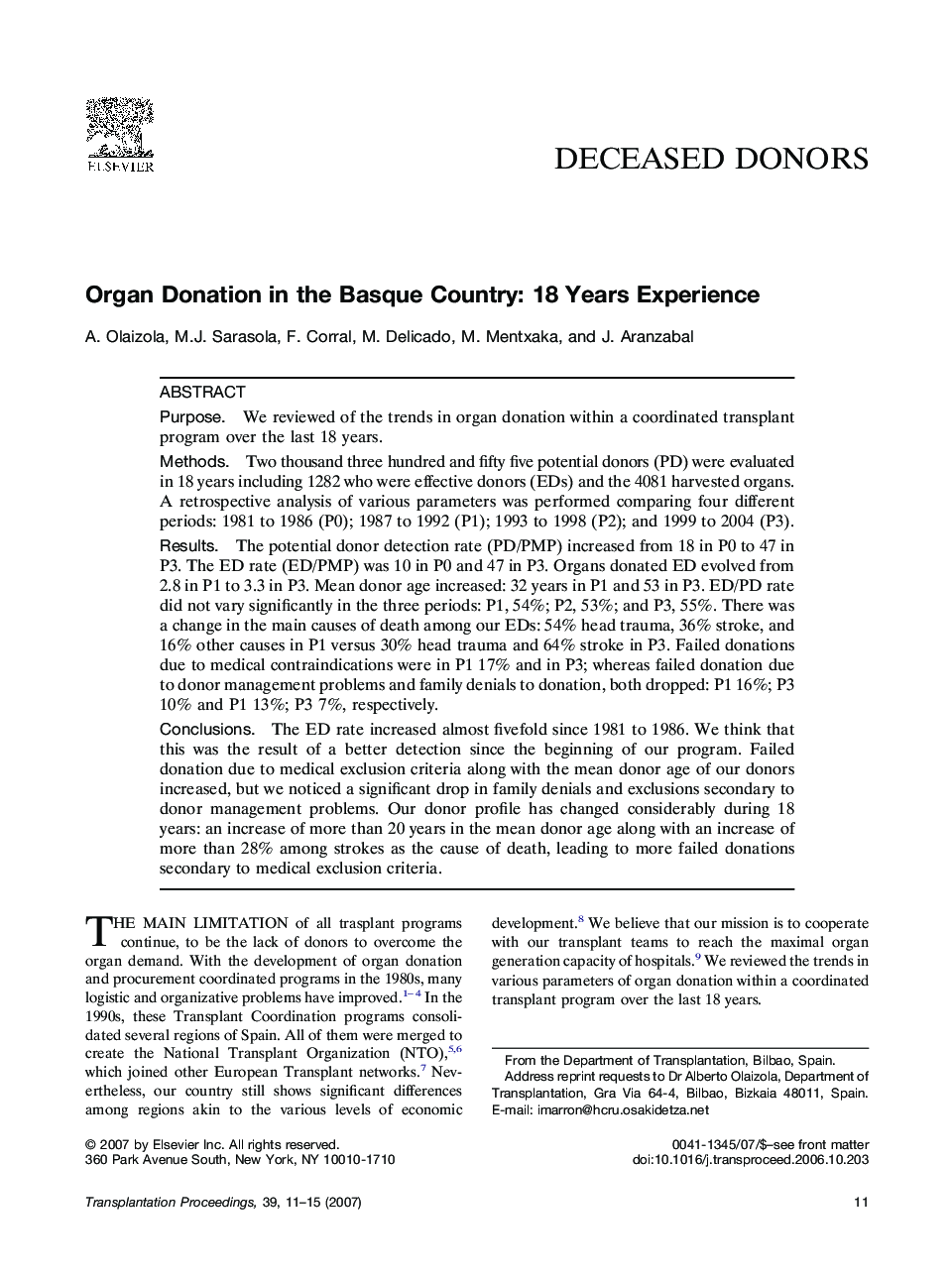| Article ID | Journal | Published Year | Pages | File Type |
|---|---|---|---|---|
| 4262902 | Transplantation Proceedings | 2007 | 5 Pages |
PurposeWe reviewed of the trends in organ donation within a coordinated transplant program over the last 18 years.MethodsTwo thousand three hundred and fifty five potential donors (PD) were evaluated in 18 years including 1282 who were effective donors (EDs) and the 4081 harvested organs. A retrospective analysis of various parameters was performed comparing four different periods: 1981 to 1986 (P0); 1987 to 1992 (P1); 1993 to 1998 (P2); and 1999 to 2004 (P3).ResultsThe potential donor detection rate (PD/PMP) increased from 18 in P0 to 47 in P3. The ED rate (ED/PMP) was 10 in P0 and 47 in P3. Organs donated ED evolved from 2.8 in P1 to 3.3 in P3. Mean donor age increased: 32 years in P1 and 53 in P3. ED/PD rate did not vary significantly in the three periods: P1, 54%; P2, 53%; and P3, 55%. There was a change in the main causes of death among our EDs: 54% head trauma, 36% stroke, and 16% other causes in P1 versus 30% head trauma and 64% stroke in P3. Failed donations due to medical contraindications were in P1 17% and in P3; whereas failed donation due to donor management problems and family denials to donation, both dropped: P1 16%; P3 10% and P1 13%; P3 7%, respectively.ConclusionsThe ED rate increased almost fivefold since 1981 to 1986. We think that this was the result of a better detection since the beginning of our program. Failed donation due to medical exclusion criteria along with the mean donor age of our donors increased, but we noticed a significant drop in family denials and exclusions secondary to donor management problems. Our donor profile has changed considerably during 18 years: an increase of more than 20 years in the mean donor age along with an increase of more than 28% among strokes as the cause of death, leading to more failed donations secondary to medical exclusion criteria.
